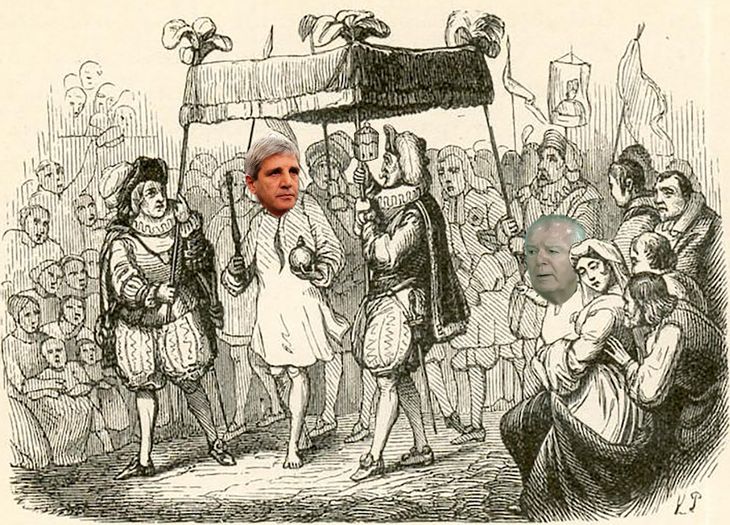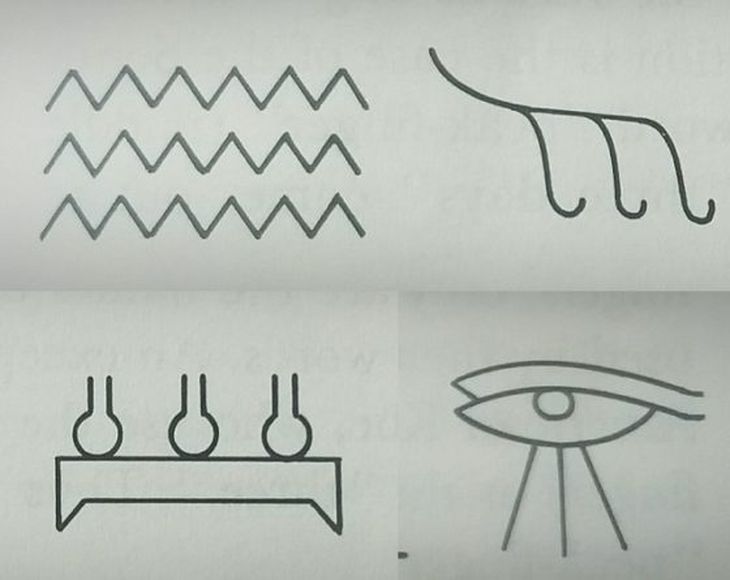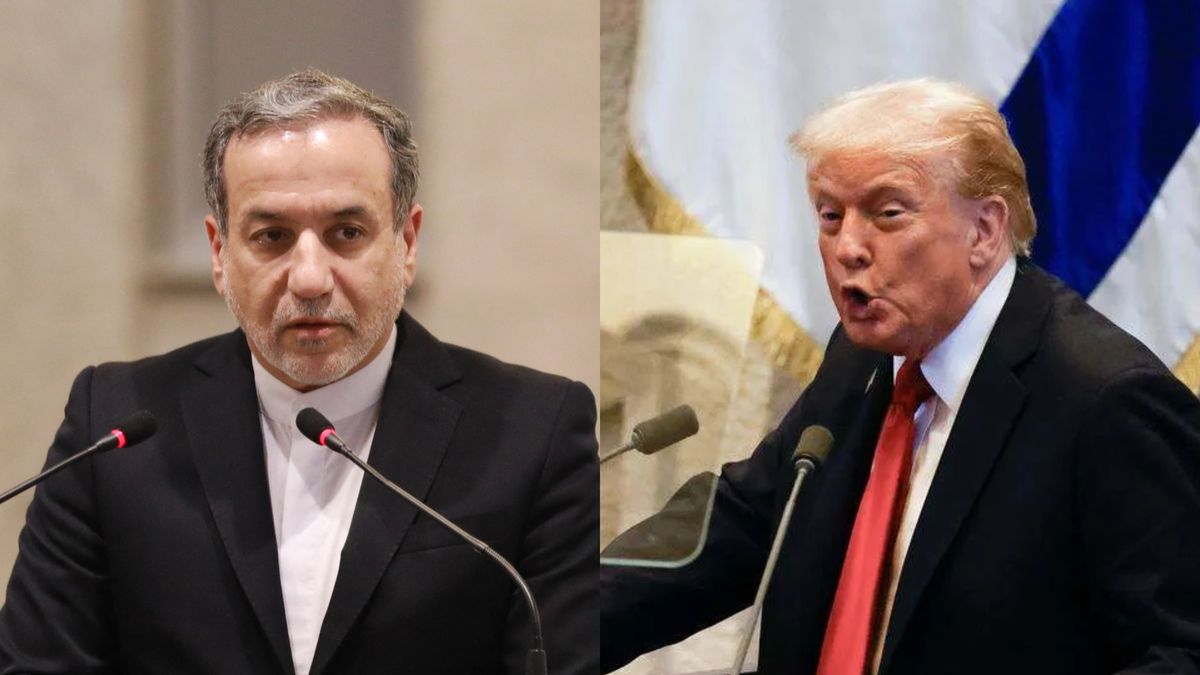Is this a bullfight?
Strictly speaking, no. The standard deviation of the EMBI movements in 10 trading days is 2.2% and that of the Merval 2.48%, which puts what we are experiencing these days below one deviation. The rise of the dollar is somewhat more significant, falling within the two deviations, that is, 1.84%.
In other words, it is true that we are experiencing a rise, especially in the dollar, but from a statistical point of view it is nothing “abnormal” (not expected) and much less something similar to a run. Just look at the graph.
Main Financial Assets.jpg
Since the current administration took office, “everyone loses” in the face of inflation. However, there have only been two runs so far: February and May.
The curious thing is that beyond the specific data and the mood of investors, unlike what happened in May when between May 14 and 23 the dollar jumped 22%, the Merval lost 17% in dollars between the 6th and 23rd and the EMBI rose 17% between the 15th and 24th, and the word “run” was conspicuous by its absence, this time it has timidly begun to emerge.
The underlying problem is not whether we are facing a run or not, nor the fact that this could be the third one that the Milei administration faces. The problem is that almost seven months after taking office, the government has still not managed to get what we call “the market” to really trust them.and still fails to do so.
A new economic plan
In reality, it is not new, rather it is an adjustment to what has been done, using other mechanisms.
With the economic plan announced last Friday (June 28), the government hoped to “continue to gain the confidence of economic operators,” a confidence that since mid-month the price of financial assets did not seem to support much, which the government attributed to political issues and had been trying to reverse by showing calm and some announcements that bordered on the incredible.
It was clear from the start that the announcements – which were expected the following week but for some reason were brought forward – were not well received. Minister Caputo and his people were aware of this from the start and started on Monday by meeting with representatives of the banking sector from whom they obtained a public declaration in their favour. But this was nothing more than words.
Emperor_Clothes_Orlando Ferreres and Toto Caputo.jpg

Orlando Ferreres, the “good boy” who dared to point out that the emperor is naked
Orlando Ferreres is one of the most respected, prudent and beloved economists in the establishment Argentine. So it was surprising on Tuesday when, almost like the child in the 1837 Hans Christian Andersen story, the unpronounceable Kejserens nye Klæde or in English “The Emperor’s New Clothes” (also known as “The Naked Emperor”) said: “On Friday a kind of Bonex plan for the banks was announced, with a different name but the debt is transferred from the BCRA to the Treasury.”
This is something very subtle, which has nothing to do directly with “the market” (but with factors such as the “official free” gap that is at record values for this Administration), but for President Milei and his people it is almost an insult.
But what was the Bonex plan?
The Bonex plan
“I have heard that fixed-term deposits are going to be frozen. I want to debunk these rumors” stated Antonio Erman González, on December 18, 1989, one day before taking office as Minister of Economy.
He On January 3, through decree 30/90 the Government launched the “Bonex Plan”” (drafted in October 1989 by Guillermo Calvo, Felipe Murolo, and Roque Fernández, with the collaboration of Domingo Cavallo and Guido Di Tella), the exchange rate was liberalized, a compulsory exchange of all time deposits exceeding one million australes (about US$500; the vast majority for seven days) for 1989 External Bonds was implemented, and financial institutions were prohibited from receiving deposits until further notice. The effect was that the monetary base contracted by 60% almost instantaneously.
ermanmenemjpg.webp

Erman González and Carlos Menem. The Bonex plan, concocted by Guillermo Calvo, Felipe Murolo, and Roque Fernandez It served for a time to curb inflation, at the cost of a deeper recession. From the steps of an airplane, Menem preferred it to Convertibility
The new bonds – issued at a 1:1 ratio with the austral – started trading at 25-30%, which implied an immediate loss of 70% for savers and a brutal “poverty effect” (they would end the year at 80%). The price of the dollar plummeted 22% and stocks 44%, remaining 64% below the maximum of October 1989. Unemployment went from 8.6% in October 1989 to 9.6% in May (the next measurement in October, with convertibility, fell to 8.9%), and the GDP shrank 1.8% in current dollars, prolonging the recession (after a fall of 1.9% in 1988 and 6.9% in 1989).
The result? From a monthly inflation of 79.2% in Januaryfor April it fell 11.41% and ended December at 4.68%. Unfortunately it was not enough and in February of 1991, before the New inflation surge, 27% that monthErman González resigned, assuming the position of Minister of Economy Domingo Cavallo
There are no two without three
John Allen Paulos (The Number Man, 1999) tells of two aristocrats, friends of mathematics, who went out for a ride. Suddenly, one of them challenges the other to name a number higher than his own. The second accepts the bet, concentrates, and after a few minutes says, satisfied: “Three.” The first thinks for half an hour, shrugs his shoulders, and gives up. Despite what it may seem, this is neither a surrealist joke nor a mathematical absurdity.
When the ancient Egyptians described “hundreds” or “thousands,” they repeated the number 100 (a spiral) or the number one thousand (a lotus flower) three times. A flood was three jars of water, crying three tears, a head of hair three hairs, water three waves, etc.
Egyptian pictograms to express the concepts of “water”, three waves, “hair”, three individual hairs, “flood”, a sky with three water jars, or “weeping.jpg

There are no two without three. Egyptian pictograms to express the concepts of “water”, three waves, “hair”, three hairs, “flood”, three jars of water, or “crying”, three tears
The Chinese adopted a similar procedure, a forest is three trees, a head of hair is three hairs, all three men, etc.
The French “trois” (three) has as its root the word “très” (very or much), the English “three” originates from “throng”, multiud, and their “trice” means both “three times” and “many”, our “three” comes from the Latin prefix “trans”, beyond,
Many primitive peoples only counted/count up to three: In Africa the Bushmen, Pygmies and Zulus, in Australia the Kamilarai and the Aranda, the indigenous people of the Murray Islands, the Vedas of Ceylon, in Brazil, the Botocudos, the Puri, the Piraha,…among us the Toba in the north and several tribes in Tierra del Fuego.
Toba tribe near the Pilcomayo River 1892. Photograph by E.C. Moody for the American Geographical Magazine no. 27. 1935.jpg

Toba tribe, near the Pilcomayo River, 1892. They used a base two numerical system.
For larger numbers they count in pairs, for example, five is 2+2+1; eight is 2+2+2+2. Why this “base 2”? Simple: we have two eyes, two arms, two legs… These systems of counting in pairs – sometimes with some modification – rarely go beyond the number ten; for them, more than that is practically like us talking about trillions, something immeasurable.
For the Pythagoreans, three is the symbol of universal harmony, since it combines unity with diversity and balances opposing positions. No manifestation exists if there is not a trinity in it: cause, reaction, effect, and also true thought: thesis, hypothesis and conclusion.
With three points we define a plane, and there are three dimensions in which we move, the natural number closest to Pi is three. It also has a sacred value, since it is the first one that has a beginning, middle and end (the Holy Trinity of Christians).
The third bullfight
Although we cannot strictly say that we are facing a run on the financial front – today’s numbers are “weak” given the Independence Day holiday in the US – as usually happens in the face of events of a certain “turbulence”, the opposition takes advantage while the network of communicators closest to the government is deployed.
Perhaps aware that even without a bullfight we could be experiencing a breach of confidence, an unexpected event occurred a few hours ago. The Minister Guillermo Francos, a normally measured manhe fired -with a knowing smile at his interviewer, a converted Mileista- against Sergio Massa with “He does the maintenance of the helicopter, let’s say… We know that…The former candidate is working to generate instability in the government because it suits him politically.”
Guillermo Francos.jpg

Guillermo Francos: strategy or “the turtle got away”?
Javier Milei already has experience of the uselessness and counterproductiveness that these types of tricks can be, which in any case They reflect the impotence of a government and do not reassure the market, from when last October he was pointed out by the American newspaper The New York Times and accused before the Argentine justice system as responsible for the rise in the dollar at that time (in the eight trading days since then the dollar jumped 12%).
It doesn’t matter if Francos is right or not, It is never good when a government – especially if it is made up of “economists” – begins to hide behind political arguments, when their response should be economic.
Ah, about the bullfight that is not this one: the idea of ”Never two without three, “There is no two without three”, “There are no two without three” (title of one of the best stories about Miss Marple, written by Agatha Christie), or our “There are no two without three” is something, as we saw, secular that despite having both a concrete and superstitious root is of dubious or null validity,… and yet “there are no two without three”
Source: Ambito
I am a 24-year-old writer and journalist who has been working in the news industry for the past two years. I write primarily about market news, so if you’re looking for insights into what’s going on in the stock market or economic indicators, you’ve come to the right place. I also dabble in writing articles on lifestyle trends and pop culture news.




